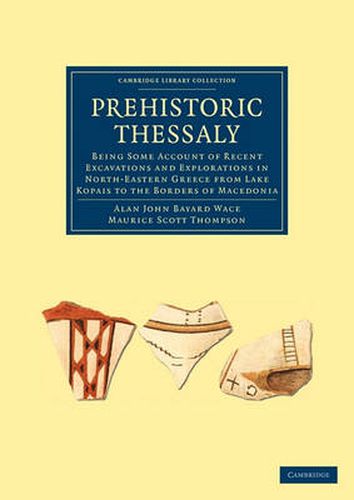Readings Newsletter
Become a Readings Member to make your shopping experience even easier.
Sign in or sign up for free!
You’re not far away from qualifying for FREE standard shipping within Australia
You’ve qualified for FREE standard shipping within Australia
The cart is loading…






This study of prehistoric artefacts and ruins discovered in north-east Greece by the team of archaeologists led by A. J. B. Wace and M. S. Thompson was first published in 1912, thirty years after that area first revealed prehistoric remains. The one hundred and twenty sites in the Thessaly area have yielded domestic artefacts and ruins ranging from spit supports to tombs. These are depicted through detailed sketches, photographs and descriptions. The evolving architecture uncovered at different strata at the excavation sites, and the changing forms of the artefacts discovered alongside them, are explored in relation to other Greek excavation sites to determine any possible historic significance. Modern technological advances have taken some aspects of archaeology in a very different direction, but the practices of meticulous data collection and comparative analysis between sites and strata demonstrated here provide a valuable lesson in establishing a chronology of cultural and domestic development.
$9.00 standard shipping within Australia
FREE standard shipping within Australia for orders over $100.00
Express & International shipping calculated at checkout
This study of prehistoric artefacts and ruins discovered in north-east Greece by the team of archaeologists led by A. J. B. Wace and M. S. Thompson was first published in 1912, thirty years after that area first revealed prehistoric remains. The one hundred and twenty sites in the Thessaly area have yielded domestic artefacts and ruins ranging from spit supports to tombs. These are depicted through detailed sketches, photographs and descriptions. The evolving architecture uncovered at different strata at the excavation sites, and the changing forms of the artefacts discovered alongside them, are explored in relation to other Greek excavation sites to determine any possible historic significance. Modern technological advances have taken some aspects of archaeology in a very different direction, but the practices of meticulous data collection and comparative analysis between sites and strata demonstrated here provide a valuable lesson in establishing a chronology of cultural and domestic development.